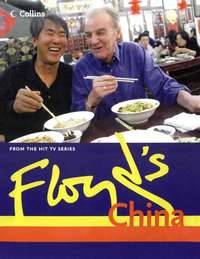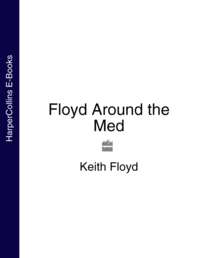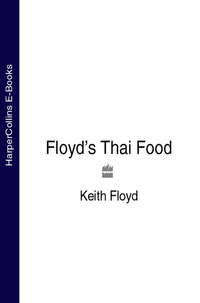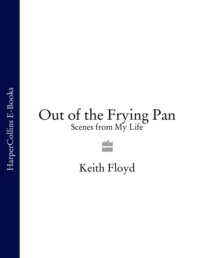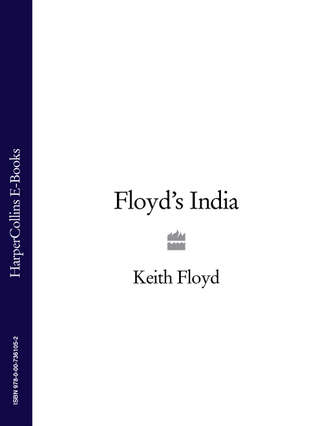
Полная версия
Floyd’s India

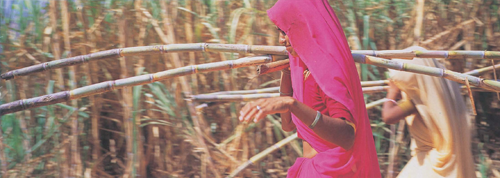
Floyd’s
India
Keith Floyd
Location photographs by Kim Sayer

Introduction
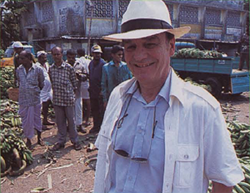
Once upon a time a 14-year-old boy caught a perch in a lake near Bishop’s Lydeard in Somerset. It was late summer, early autumn. There were blackberries in the hedgerows and beechnuts underfoot. In his tackle bag the young angler had a loaf of stale bread from the Golden Hill bakery in Wiveliscombe. This he soaked in water to make small pellets of bread paste for bait. He had cycled 12 miles from before dawn to be at the lake at sunrise. By noon his keep net contained six perch, one crutian carp and two small tench.
Contented, he opened the saddle bag on his bicyle to take out the sandwiches that his father had prepared. The thermos flask of coffee was there with a twist of blue sugar paper with sugar inside, but not the sandwiches. He had forgotten the picnic, but he did have a packet of 10 Nelson filter-tipped cigarettes and a box of Swan matches.
With his sheath knife, he scaled, de-finned and gutted a couple of perch. He cut some twigs from a tree and made things that later in life he discovered were kebab sticks. He picked blackberries and shelled beechnuts and stuffed them into the soaked stale bread, then he formed the bread into patties and toasted them over a fire of pine cones. He speared the fish on the twigs and sat cross-legged as he held them over the fire until they were cooked. With his hands, he ate the scorched fruit-and-nut-stuffed bread patties and succulent morsels of barbecued perch.
A hundred years later, by the most bizarre route, that boy became a restaurateur and what is obscenely called, not only obscenely but totally without justification, a television celebrity chef. Over 16 or 17 years he travelled the world, eating, cooking and learning, watching the legs being ripped off live frogs in a Singapore market, drinking the blood and the still-pulsating heart of a cobra in Vietnam, cooking salmon fishcakes wrapped in pig’s caul in Northern Ireland, staring at the Southern Cross in the top end of Australia, eating ribs of beef and living in fear of being bitten by a king brown (one of the world’s most poisonous snakes–Australia has eight out of ten of the most poisonous ones). He cooked pasta in Bologna, couscous in Morocco, moussaka in Greece, jambalaya in New Orleans, paella in Spain, bouillabaisse in France, dumplings in Prague, goulash in Budapest, puffins in the Arctic Circle, bear on the Russian border, carp in Czechoslavakia, hog’s pudding and lava bread in Wales, salmon and haggis on the banks of the river Tay, Nile perch stuffed with raisins and nuts in Luxor, and freshwater crayfish cooked in beer in Sweden on a mad midsummer night. He prepared tom yang kum in Bangkok and beef rendang in Kotabura in Malaysia, stewed wildebeest in a poiki pot in Zambia, cooked cakes and schnitzels in Vienna, cooked pig’s trotters (crubeans) and bacon and cabbage in Cork city, and the rest and more.
Weary of airports and hotel lobbies, taxis and studios, absurd locations and television directors, producers and book editors who know absolutely bog all about the subject (except that it is popular)[not us, surely? Eds], this boy–who is now a man but still remembers being 14 and remembers the words of Confucius, ‘Give a man a fish and he will live for a day, teach a man to fish and he will live forever'–has had enough. He decides to move to the Mediterranean, where the olive, the lemon, the tomato, the aubergine and the wine are the jewels in the glittering culinary crown. Then, one fine day, he gets a fax, ‘Go and do a series on India', it says. ‘I don’t know anything about India', he replies. ‘Don’t worry', they say. ‘We will send you all the information. All you have to do is pop on to a plane and get cooking.’ And so they did. The facts as presented to me by Nick Patten, my director, and my esteemed researcher, Raj Ram, I have incorporated into my letter from India that starts on page 12.
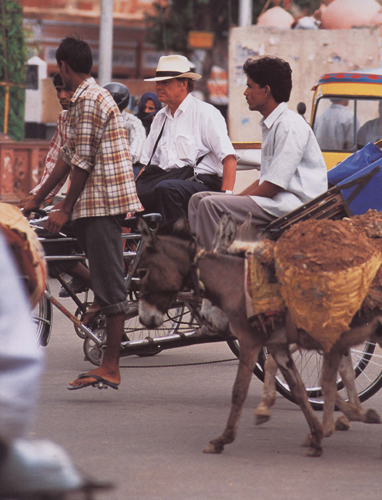
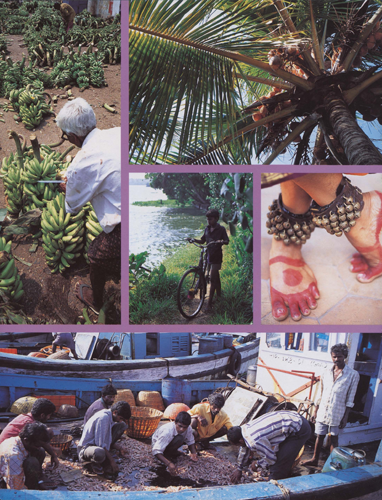
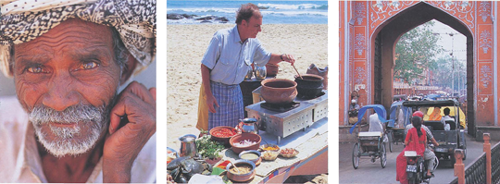
Contents
Cover
Title Page
Introduction
Letter from India
Kerala…sketches from coconut country
Goa
Madras (now known as Chennai)
Bombay (now known as Mumbai)
Rajasthan…of polo, midnight feasts and other stories
Calcutta and West Bengal
The Punjab
The Recipes
Madame Masala
The Vexed Subject of Rice
Thali
Chicken Dishes
Tandoori Dishes
Fish
Meat Dishes
Vegetable Dishes
Chutneys, Pickles and Relishes
Sweets and Drinks
Index
Copyright
About the Publisher
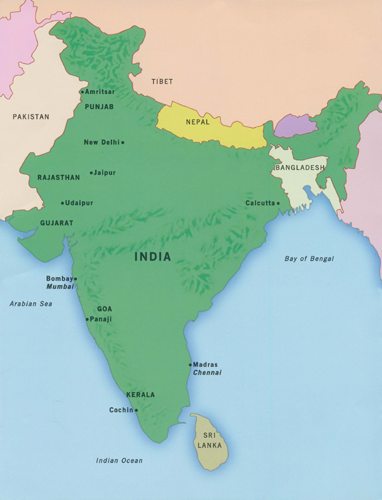
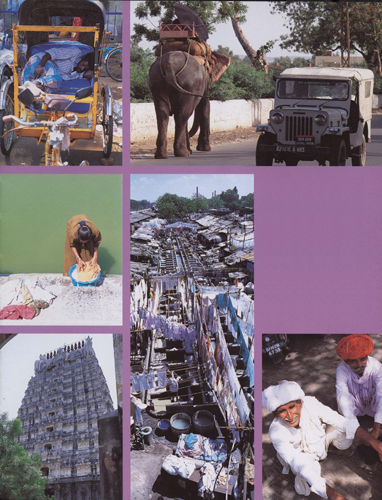
Letter from India

Kerala…sketches from coconut country
The big orange sun is rising slowly, illuminating the hazy morning as the plane begins a series of long, slow, gentle swoops downwards to Cochin airport in the southern Indian state of Kerala. Endless coconut plantations shimmer grey-silver, slate and green as the sun washes through whisps of cloud and beams on endless meandering waterways, alternately gold and silver, stretching far away. On the slopes there are coffee and tea plantations. Whitewashed colonial Portuguese or Dutch churches are scattered in clearings. Neat villas and verandahed farmhouses pop up in shafts of bright sunlight. Cows, bullocks and goats wander across extinct dried-up deltas that criss-cross the verdant landscape. The twisting waterways and lagoons give way to huge wide rivers and estuaries. Big rusting ships glide lazily along, while all manner of brightly coloured ferries, fishing boats and traditional craft, lanteen-rigged, double-ended, high prows and sterns sweeping up like a cobra poised to strike, sail serenely, outrageously overladen with mountains of hay or sculpted pyramids of coconuts, precariously but precisely stacked, edging steadily into harbour.
As the plane sweeps low over the water for its final approach, I can see loincloth-clad, sinewy men throwing big circular nets from the tiny narrow canoes under the long concrete bridge that the spans the mainland and Willingdon Island. The bridge is teeming with pedestrians, turmeric-coloured tuktuks and brightly painted, overladen trucks piled high with hessian sacks of rice and pepper, coconuts or bananas. On top of their cargo, their backs to the oncoming traffic, sit the workers, huddled against the morning smog and dust, their mouths wrapped in bright bandannas.
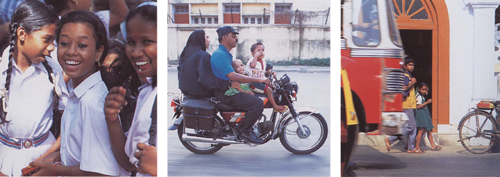
Images from Kerala.
Even at this early hour, the air is hot and slightly choking as we walk across the tarmac of the neat yellow airport. The runways are fringed with coconut palms and, although quite new, the airport buildings have the quaint, unhurried air of a genteel colonial outpost.
You present papers, tickets, passport and boarding cards several times to officials, soldiers and policemen. They are polite, insistent and bewildering. Behind the barrier in the baggage hall, hotel touts, porters, relatives, more soldiers, taxi drivers, nuns, hippies and beggars jostle. In the confusion I am met by two, but rival, chauffeurs, each sent by a different company to pick up Tess, my wife, and me and our 12 pieces of luggage. A polite man in a safari shirt and pressed chinos, carrying a clipboard and briefcase, settles the dispute, I think! But do I pay him too?
One driver will take Tess and me, and the other our luggage, but not before our trolleys have been hijacked by about six itinerant porters. Lesson one: carry bundles of small denomination notes or hold on to your luggage like hell and, more importantly, make sure the man who says he is here to escort you is genuine! They all want to take you somewhere, so don’t arrive drunk or you may end up anywhere!
The aerial view I had enjoyed as we came into land appears. But soon we are bouncing along the centre left or right of the road, charging at oncoming window-less, garish buses like a wounded buffalo or swerving past on the inside of fume-belching trucks and weaving crazily between the streams of tuktuks, scooters and motorbikes, wildly and narrowly missing the oxen, buffaloes, cows and goats (goats, aka mutton, not lamb, on menus). Huge elephants, carrying their breakfast under their trunks–they eat about 300 kilograms of fodder per day–pad morosely towards their daily toil.
And all the while our driver, Johnny P.J. (as I came to know him in the course of our visit), has his hand firmly pressed on his five-tone horn.
I light up a fag, my first for hours, shut my eyes and hope for the best.
The tossing, turning, jolting, stomach-churning jeep slows down. After nearly an hour of relatively rapid progress, we are entering the morning rush in Cochin. The din, mayhem and confusion is infernal, yet strangely peaceful. There is a gentle feeling. Brightly clad women and neatly uniformed school kids walk steadily along the dusty streets. The stalls and shops are sleepily opening. Mud forecourts are being swept with short-handled stick brushes. The traffic is, in fact, not aggressive, it is just the noise from their horns, not the drivers themselves. It seems to be a case of let live, let die, but without malice of any kind. I ask Johnny P.J. if he knows somewhere good where we can stop for breakfast.
He shakes his head sideways, and a few moments later pulls up in front of a single-storey building on the corner of a very crowded junction.
‘Why are we stopping?’ I ask.
‘You said breakfast.’
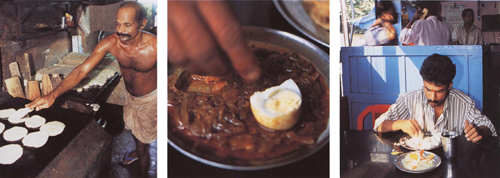
Now that’s a curried egg!!
‘But, you said No’, I reply.
He shakes his head sideways again. I am beginning to understand. He opens the door and we duck into the low doorway of the Hotel Unikrishna.
Above faded red formica tables on spindly and teetery metal legs, three-winged fans spin lazily from stretched wires to stir the fetid air, while chattering loinclothed men squat, right-handedly eating their breakfast.
Waiters, barefoot or in sandals, carry steaming tin plates. In a corner behind a ramshackle barthe car (tea) boys juggle with long-spouted tin teapots, a huge urn of boiling milk and a cauldron of boiling water, pouring both milk and tea from a great height simultaneously into glasses and tin mugs with the panache of a New York city cocktail barman.
I have not been able to take curried eggs seriously as a dish because of the Goon Show catch phrase, ‘No more curried eggs for me’, but hard-boiled eggs masala — i.e. with a curry sauce–served with uppama (a cake of steamed semolina stuffed with curry leaves, mustard seeds and chillies) and coconut and coriander chutney is a terrific way to start the day. (In fact, I was so taken with spicy vegetarian Indian breakfasts that I did not eat a European-style breakfast for the entire two and a half months of my visit.)
There are other good dishes too, such as idli, a steamed rice sponge cake served with vegetable masala, chickpeas, lentils and potatoes in a rich onion and tomato-based gravy; appam, a rice flour pancake with spicy potatoes simmered in coconut milk and chillies; and idiappam, thin rice noodles garnished with grated fresh coconut, served with black bean masala. These and many, many other dishes are available for an average cost of a few pennies.
I drink fresh lime juice with soda and salt (if you like sweet drinks, thin honey can be substituted for the salt). The tea, made strong and with hot boiled milk, is too rich for me. There are a dozen cooks in the lean-to shack that is the kitchen. It is fiercely hot and gloomy, with just a single light bulb hanging from the ceiling. Before a long low stone, through which blazes a fire fuelled by wood and coconut husks, the cooks squat, sweating over huge brass or aluminium pots, stirring the contents. They wear only a small piece of grubby sheet tied around their waist. In another corner a boy sits cross-legged, peeling and chopping a mountain of tiny, tangy red shallots. On makeshift griddles over wood fires, cooks are rolling out pancakes, cauldrons bubble and gurgle, and steam rises chokingly into the ceiling with the acrid taste of eye-watering wood smoke. The tin plates, once empty, are rinsed under a cold water tap mounted on the wall above an open drain. A veritable black culinary hole of Cochin and not a place for the weak-stomached or the faint-hearted.
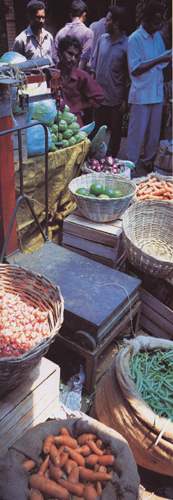
After breakfast we visit the banana market and the produce market, which is dirty, fly-infested and stinking like the fetid, polluted river Styx, yet peopled by brightly dressed, cheerful shoppers who stare curiously, uncomprehendingly at me as I do the director’s bidding. For example, buying a bunch of curry leaves four times from the same stallholder, who has clearly not been on a television course — much to the frustration of Nick, the director — and, instead of obediently serving me in this absurd way (with no explanation as to why), keeps looking at the camera. A cardinal sin in a director’s eyes!
Just as the stallholder has recovered from this bizarre intrusion into his daily business, Kim, our stills photographer, manifests himself from behind the bewildered crowd of onlookers and asks him to repeat the process. ‘Please, just for me, if you don’t mind. Thank you.’ He clicks the shutter. The man relaxes.
‘Just one more, please. No, please don’t look at the camera. Just look at Mr. Floyd.’
I can sense him thinking, ‘Who the is Mr. Floyd’.
‘Thanks, lovely. I’m just going to change the lens.’
I can hear the man thinking ‘Change the lens. For a bunch of curry leaves? Why the?!’
‘Terrific, thank you. Now I’ll just do a wide angle. No, don’t look at the camera. Just explain to Mr. Floyd the joy of um…’ (aside to me, ‘What are those things?’)
‘Curry leaves.’
‘Oh, yes, curry leaves.’
Click, click.
‘Thank you.’
Throughout the hot, hazy afternoon we tramp round to the pepper exchange, take tuktuk rides and shoot emotive pictures of this bustling city. As the sun begins to sink, even Big Mike, the camerman, is wilting under the weight of his camera and the oppressive heat. Gratefully, we clamber into our vehicles and head, albeit slowly, through dense cacophonous traffic and the streaming pedestrians back to the tranquillity of our hotel, a bath, change of clothes, a stiff drink and dinner. We have been travelling and working since 3.00am. and by 9.00pm everyone in the crew has gone to bed. Tomorrow we start at 4.00am.
From the balcony of our room, I overlook the outlet of the Vembanad Lake, which flows into the Arabian Sea. Across the sound, the lighthouse flashes its pale light, occasionally illuminating a ghostly container ship slipping out on the night tide to the Middle East, Africa and beyond. The rooks that chattered so harshly in the red-flowered Mayflower trees are asleep and silent, and a security guard in a neatly pressed uniform is leaning against a tree having a smoke as he stares across the black water. I finish my drink and climb happily into a cool, firm bed.
Situated along India’s southwest coast, Kerala is a lush, green tropical paradise. From the fabled Malabar Spice Coast, it stretches east to the mountain peaks of the Western Ghats. Kerala is 603 kilometres long but only 75 kilometres wide at its broadest point. The interior is riddled with inland waterways known as the backwaters, extending from the coast far inland and, as in Venice, these act as roads. Houses and schools are built on the banks and people travel by boat and bursting water buses. These areas are full of coconut palms and paddy fields — rice is Kerala’s main grain and is eaten at every meal. Indeed, Kerala means ‘Land of the Coconuts’, and coconut is a common flavouring in the local food. Another widespread tree is the curry leaf tree, whose sweet and spicy leaves give the local dishes a distinctive aromatic flavour. The local flavourings of coconut and spices are combined with meat, fish and vegetables in dishes such as prawn ularthiyathu (prawns in coconut milk), beef ularthiyathu (a dry beef curry), or vegetable stew (called avial), traditionally garnished with quickly fried fresh curry leaves (see pages 114, 134 and 155).
The contrast between the little communities and villages clustered along the water’s edge, or in cleared compounds under the coconut palms and cashew trees, and the city is strikingly vivid. The shallow waterways are covered in lilies and, as you glide past the little settlements with their neat gardens of vegetables and the black pigs, chickens, ducks and goats munching in the undergrowth, kids are playing cricket with homemade bats and bamboo sticks for stumps. Women, waist-deep in water, beat and rinse the washing. Men throw nets from narrow canoes. Huge, brilliant kingfishers swoop like Mirage jets just above the tranquil water and nilgiri birds — known as the laughing thrush–screech hysterically in the rich, tangled bamboo. School children, immaculate in blue shorts or skirts, white shirts and blue ties, clamber on to the little ferries that cross the river to take them home from school.
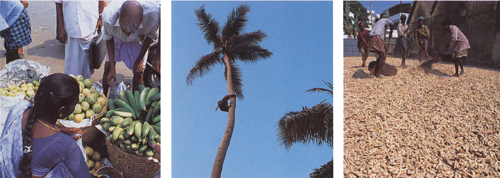
Hard work – but the coconut is essential in the Indian kitchen
While rice and coconuts are the main crops, on the higher ground grow the more valuable coffee, tea, cocoa, rubber, pepper and cardamom. Kerala is the home of many spices and these have attracted merchants from all over the world. It is the natural habitat of black pepper and cardamom, and ginger and turmeric are also grown. India produces one third of the world’s pepper and much of it comes from Kerala. Before the Portuguese introduced chillies into India in the 16th century, the Indians only had pepper to heat up their dishes. There is a interesting wholesale spice market in Cochin and the city also has the distinction of having the first church built by Europeans in India, St Francis Church, which was started in 1503. Tropical fruits are also abundant in Kerala, in particular pineapples and bananas, including the rare red-skinned variety that is supposed to be good for your health.
All the while, almost in a dream, I am sitting on the shaded deck of a highly polished and varnished rice barge, sipping a cool beer under a lazy fan, waiting for my meal of cabbage and mustard seeds cooked in coconut milk, beetroot with chillies, fresh coconut bread and chicken. This long, elegant craft once transported rice and fruits, nuts, bananas, hay or building materials the length and breadth of the area. In former times the hulls were fastened with coconut twine. Not a rivet or a metal fastening was used and, on the open stretches, a single, huge, pregnant sail drew them gracefully along. Today, we drift gently along with a 25hp outboard motor fixed on the side, and where once the rice was stored, there are now quaint, charming, wooden bedrooms and a plant potted in a brass urn. This is paradise.
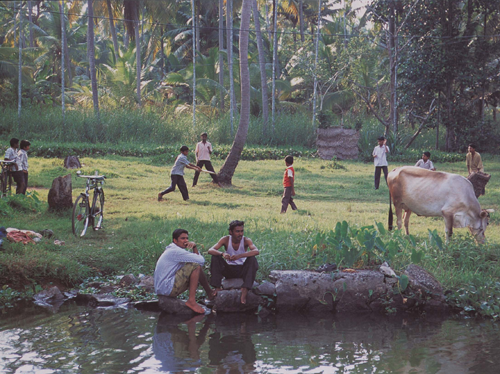
Or, rather, it would be if I did not have to do pieces to camera and pose, cheerfully, thoughtfully, happily or excitedly as I deliver what are supposed to be words rich in information, with wit and enthusiasm, and describe my food without speaking with my mouth full, or having a fag! OK, it’s one hell of a job. But, as they say, someone has to do it.
Looming suddenly round the bend is a huge floating hay rick 6 or 7 metres high, amazingly piled on to a narrow-beamed, 12-metre rice boat. The hay overhangs the bulwarks either side. It has been loaded on to the boat with incredible precision and it passes us without the slightest wobble or even the remotest chance that it could topple over. One man is sitting smoking on the long-necked prow, another sits in the stern, his feet trailing in the water as he steers the tiny outboard engine that propels the vessel.
Apart from some birds laughing in the jungle and the lap of the water rushing under the hull, all is peaceful. Bugger the director. I think I’ll have a fag and a slurp.
The deck hand places a bottle of Indian whisky, a bottle of mineral water and a bucket of ice on the mahogany table. The sun is going down fast over the Chinese fishing nets, their cadaverous cantilever limbs loom in a sinister way like huge praying mantises in the fast-falling dusk. The coastline is dotted with these vast fishing nets that were introduced to the area by merchants in the time of Kublai Khan. Consisting of five teak poles rising up to 30 metres in the air, they scoop up fish as they swim by at high tide. The nets are considered so valuable that brides’ families even offer them as dowries in marriage.
Fish is the speciality here and makes up a large part of the Keralan diet. Munambam Harbour is the location of one of the many local fish auctions. Fishing boats that left in the middle of the night return in the late afternoon as the sun casts its golden evening hue over the Arabian Sea. Boats crowd the docks, five or six deep, and as soon as the day’s catch hits the land the auction starts. The noise is terrific as buyers shout out prices and fishermen haggle over the value of the catch. The nearby prawn factory has no mechanisation at all. About 160 women squat on the ground, peeling prawns at lightening speed and sorting them into different sizes. They are paid by weight so they wield their sharp knives with superb precision and can peel up to 60 prawns a minute.
Soon the idyll is over and it is time to start the job for which I have travelled to India: to learn to cook Indian food. At 9.00am, two days later, I present myself to the executive chef of the luxury Taj Malabar hotel on Willingdon Island, M.A. Rasheed (where I am, of course, staying in unbridled luxury with Tess and the rest of the gang), put on my apron and begin to learn about masalas. Talk about walking over hot coals, more like walking over hot chillies!





